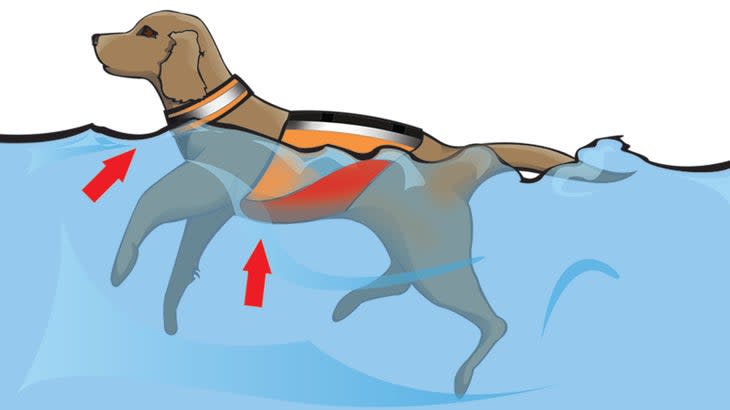Why Your Dog Needs a Life Jacket
This article originally appeared on Outside
Bowie, our husky-German shepherd mix, loves riding along on the raft when we go out on local rivers here in southwest Montana. But, perched precariously on one of the tubes, he slipped and fell off in a Class 1 rapid last summer. Bowie knows how to swim, but he wasn’t wearing a life jacket, and my heart stopped when he disappeared under the water. Although he quickly emerged behind us and I was able to pull him back into the boat within a few seconds, I realized I need to do a better job of keeping him safe, and wondered: do dogs need life jackets?
So, I called my favorite life jacket company, Mustang Survival, to get answers.
Do Dogs Need Life Jackets? Absolutely.
Lili Colby has been working on personal flotation devices (PFDs) for over 30 years. First at MTI, a company she and her Husband, Gordon, took over in 2011, and now at Mustang Survival, which acquired their business in 2020. Colby commissioned a design for a better doggie PFD 10 years ago, a product which would eventually become the Mustang Under Dog.
She relates a story that sums up the importance of canine flotation. "I was working a trade show in Orlando, and a Coast Guard rescue officer came up and thanked me for making the Under Dog," Colby tells Outside. "He explained that freeing owners of the need to worry about their dogs in the water actually makes it easier for them to save their own lives."
"No one expects to capsize," Colby continues. So, when it happens, it's chaos. Suddenly finding yourself in the water, you've got to worry about your own life, those of your friends and family, plus all your stuff. Putting a life vest on your dog means there's one less thing to worry about.
How Should A Dog Life Jacket Fit?
You should put a life vest on your dog for any water-based activity, whether you’re rafting, canoeing, on a power boat, or even paddleboarding.
However, like just like I found when I dove into car safety for dogs, flotation devices are designed more for human convenience than true dog safety. Most popular doggie PFDs drape over a dog's body like a cape, relying on the foam to pull them up from the top rather than providing buoyancy where they need it most. In contrast, the Mustang Under Dog moves the foam off the dog's back and sides, to under its belly and neck. This lifts the dog higher in the water, making it easier for your pup to swim and breathe.

I asked Colby if floating higher in the water might make the dog more prone to rolling over. She explained that the Under Dog is designed to position the dog in its natural swimming position, with its rear lower than its head, and says the design actually increases stability for most shapes and sizes of dog, with the exception of Dacschunds. That breed's proportions, with the long, weiner-shaped body and stubby little legs, just doesn't leave room for a bunch of foam under the belly.
That time that Bowie fell out of the raft, I was able to hoist him back in by pulling on the top of his regular leash harness. The Under Dog adds to that capability with two prominent lifting loops, located over the torso and neck, places from which you'd normally pick up a dog. Those also provide secure leash-attachment points, so you can safely secure your dog at put in and take out areas, plus reflective panels for nighttime visibility.

Colby explains that it's important to remove a dog's leash any time you're on the water, though. Attaching the dog to a boat could drag the dog underwater if it flips, attaching the leash to you could tangle both of you while you try to swim, and a loose leash could become entangled with a strainer in the water. It’s also important to adjust the vest so it fits the dog tightly, to avoid tangles and snares. She says that, if your dog falls out of the boat while wearing a PFD, it's a better idea just to wait until you both clear the rapid or obstacle, then recover the dog once it's safe to do so.
"No one plans on getting into trouble on the water," Colby says. "Dogs should wear life vests for the same reason humans do. You never know what might go wrong."
For exclusive access to all of our fitness, gear, adventure, and travel stories, plus discounts on trips, events, and gear, sign up for Outside+ today.

